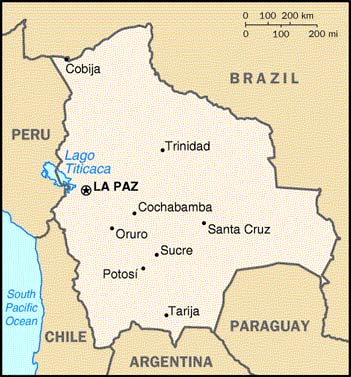

Status Quo Side: Bolivia
Non-Status Quo Side: Cuban-led insurgents
Region: Western Hemisphere
Conflict Type: External Intervention
Issues in Dispute: Governance
Geographic, demographic and historical forces had impeded exploitation of Bolivia's natural wealth. In 1952 nationalist reformers seized power, but lost support as economic problems and corruption persisted. The popular Vice President, General Rene Barrientos Ortuno, took control in 1964 and in 1966 was elected President. Opposition continued particularly from the tin miners.
Cuban leader Fidel Castro reportedly considered setting up a base for revolution in the Southern Cone of Latin America. Revolution promoter Che Guevara chose Bolivia and took command. Despite friction between local pro-Soviet and pro-Chinese factions, advance agents collected supplies. Guevara arrived in November and began training Cuban and Bolivian recruits despite adverse conditions, including peasant disinterest.
A successful guerrilla ambush began five months of clashes. In June-July, Army occupation of some mines triggered a miners' strike and widespread urban protests. Fearing to unite miners and guerrillas, Barrientos declared a state of siege. By July 10 the crisis eased and thereafter the guerrillas, lacking popular and even local Communist Party support, and facing special army units trained by US Special Forces, rapidly became decimated. Guevara, whose presence was not officially confirmed until July, was captured and executed on October 9.
The Cuban-inspired insurgency was suppressed.
The July 1968 publication of Che's diary, leaked to Cuba by the Bolivian Interior Minister, caused a major confrontation between rival military leaders. Martial law was declared. Tension eased in October and a new, largely civilian cabinet was named.